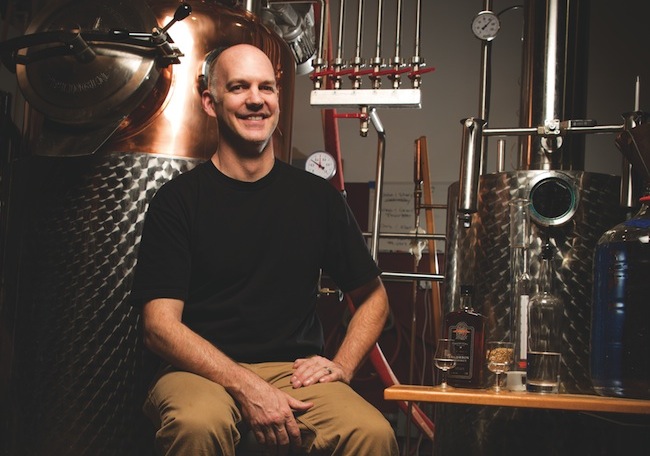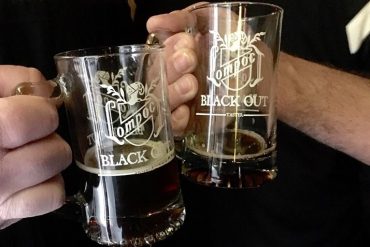The ringtone on Corey Rock’s cell phone is “Patience” by Guns N’ Roses, but for this third-generation fisherman in Newport, patience is of little use when it’s crab season.
“My father’s a great fisherman, and he always says that in crabbing, there’s the quick and the dead,” says Rock, 38. “There’s only so much crab out there, and they’ll all be caught up. It’s just a matter of who’s going to do it.”
An Oregon crabber will bring in an average of 150,000 pounds of Dungeness crab, which wholesales for an average of $2 per pound. The commercial crabbing season begins in December and lasts for three months. The short season breeds long risks.
In a typical December along the Oregon coast, waves reach about 12 feet, but at least once a year, swells of 20 feet or higher will threaten crab fishermen, says Rock. “There is a lot of wind. You’re pulling in your gear, securing things on deck, shutting the doors down tight, and you jog into it. You point the bow into the weather at a crawl, enough so you can steer.”
But that doesn’t diminish his love for a job that is in his blood. For Rock, the tradition began when his grandfather, Archie Rock, took up fishing on the central Oregon coast after the logging dried up in the Medford area. His father, Joe Rock, followed in his wake, and now three generations of the family have made their living from pulling Dungeness crab from the Oregon coastal waters.
“It’s one of the last things where you can wake up in the morning and you have no idea what’s going to happen,” he says. “It’s the last cowboy-ish thing to do.”
When the tide is high, Rock steers the Kylie Lynn, a 73-foot shrimp trawler from the Louisiana Gulf Coast that Rock modified for West Coast crabbing, through the channel from the Yaquina Bay and out to sea. For three to five days a week for months, he leaves his wife, Maria, and children, Kyle, 9, and Kylie Lynn, 7, stalking crab 10 to 20 miles off shore. In that way, the job of a crabber is unchanged since it began on the Pacific Coast in the late 1800s.
Maria, used to go out on the jetty at Newport at the start of each season to watch him sail out on the Kylie Lynn with his crew of three. No more.
“We’ve had boats not make it over the bar, and go out opening day of crab season, flip over and lose four guys,” says Maria, who has been on the board of the Newport Fishermen’s Wives Association for nine years. “It’s a time of year when fishermen are desperate—sometimes too desperate—and they make bad choices.”
Instead of going out to the jetty, Maria talks with their children about their father being away most of the next two months.
“It’s just something you kind of get used to,” Maria says. “The better part of our marriage I’ve spent missing my husband, but when he comes home, it’s special.”
The Dungeness crab is the official state crustacean, and on the coast, it is as iconic as the Douglas fir, the hazelnut and the American beaver. According to the Oregon Dungeness Crab Commission, the species was reportedly named after a small fishing village on the Straight of Juan de Fuca in Washington.
Dungeness are caught in circular steel crab pots, which are attached to a line and buoy. Squid or razor clams are used as bait for the crabs dwelling on the ocean floor. Fishermen like Rock bring in 150,000 to 300,000 pounds of crabs in a good season, keeping only the mature males. Through these and other sustainable fishing practices, the Oregon Dungeness Crab Commission has earned the support of such groups as the Monterey Bay Aquarium, the Audubon Society, Natural Resource Defense Council and the Environmental Defense Fund.
December through February is the peak Oregon Dungeness crab commercial fishing season, though less intensive recreational crabbing continues along Oregon beaches through August 14.
Oregon native James Beard, anointed the “dean of American cookery” by the New York Times in 1954, called Dungeness a “meal the gods intended only for the pure in palate.” As the author of several seminal cookbooks, appearances on television’s first cooking shows, and writing for Gourmet and other magazines, Beard became a global presence in gastronomy. He established the James Beard Cooking School before he died in 1985.
Beard had spent summers as a boy at the beach in Gearhart, fishing, gathering shellfish and wild berries, and cooking what he caught. Today chefs on the Oregon coast and around the state carry on the esteemed tradition.
At Newmans at 988, a French-Italian restaurant in Cannon Beach, chef John Newman’s delight is fresh ingredients of the north coast, especially Dungeness, when it’s in season. Crab cakes are a signature dish, he says. He combines chunks of crab leg meat with a whitefish mousse made of halibut, scallops lemon, cream, parsley, salt and pepper instead of the usual eggs, mayonnaise, celery, onion and breading.
“It’s all killer and no filler,” says Newman, who tops the crab cakes with a lemon aioli and candied lemon zest. (Recipe page 66).
Experiencing crab in a fine dining milieu is great, but rustic also rules, notes Newman. One of his best culinary memories is of a day of crabbing near the coast, building a fire pit with driftwood on the sand, and boiling the crabs in cast iron stockpots filled with seawater from the bay.
“Voila! It was a picnic that was just over-the-top delicious,” Newman recalls. “It was the picture of bounty, and how fortunate we are here.”
In Portland, Dungeness appears on seasonal menus at Jake’s Famous Crawfish, a downtown landmark for more than 110 years and considered one of America’s top seafood restaurants. It features more than thirty types of fresh fish and seafood, with an emphasis on traditionally prepared fresh Northwest products.
It is one of the McCormick & Schmick’s Seafood Restaurants, where Bill King is vice president of training and culinary development. King came to Oregon thirty-two years ago, after beginning his career on the Atlantic Coast, in and around his hometown, Wilmington, Delaware.
Dungeness is as popular in Oregon today as it was then, King says. He considers the subtle sweetness of the meat best suited to being served cold, in salads and appetizers.
“I love nothing more than eating a whole crab in the shell, cracking it, and taking the time to pick it apart and eating it cold, dipped in mayonnaise with a little Tabasco,” he says. “The absolute premier portion of crab is the legs, when you get the white meat out of the shell, you have these football shaped pieces that are as sweet as anything, and they have a little more flavor and body and great texture.”
The texture holds up well to being sautéed, in crab cakes and used in stuffing, for dozens of recipes, says King, whose cookbook, A Chef’s Bounty, has recipes featuring crab and other local ingredients—from Marionberry elk chops to hazelnut-crusted venison.
The process of deftly extracting crab from its shell and savoring each bit is a gastronomic pleasure linked to one of King’s best memories. He had just begun working as a chef at the original McCormick & Schmick’s, formerly on First and Oak streets in Portland. It was one of the first dinner dates he ever had with his wife, Jennifer, whom he had been dating for about six months.
“We each ordered Dungeness crab, and we sat and ate and talked, sipping some crisp white wine for about three hours, picking away at the crab and getting to know each other,” King says. “I have vivid memories of that, and that’s part of why I still love eating Dungeness that way today.”







